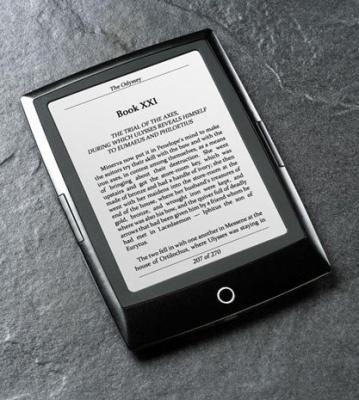Plastic Logic shows a flexible color plastic-based e-paper display
Plasic Logic has unveiled a new flexible e-paper prototype display. The new plastic-based display features 4,000 colors at 75 ppi. It's quite large (they say it's almost A4 in size) It is made from over 1.2 million plastic-based transistors. It can be bent without distorting the image. We're not sure how close the company is to actually produce such panels. We assume that the new display is E Ink based, but we're not sure.






